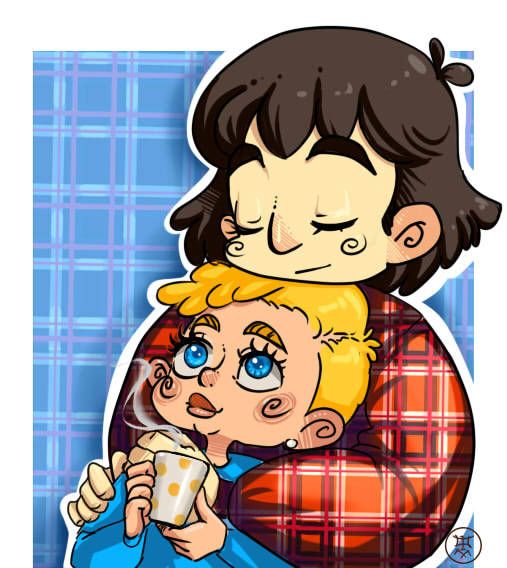#itiswarm
Explore tagged Tumblr posts
Photo
Here we go

Beach time #beachtime🌴☀️🌊 #barcelona #holiday #nowork #beach #itiswarm #goodweather☀️ (helyszín: Barcelona, Spain) https://www.instagram.com/p/CkvApjRoTbM/?igshid=NGJjMDIxMWI=
1 note
·
View note
Link
David Glickman Crunch Network Contributor David Glickman is an entrepreneur-in-residence and digital health advisor for Nokia Growth Partners (NGP) and founder of Lively (now part of GreatCall Inc.). How to join the network The current market for older adult care is massive — and growing at an unprecedented rate. According to an AARP report, the 106 million Americans over 50 represent a transformative force that will generate more than $13.5 trillion in annual economic activity by 2032, accounting for more than half of the U.S. GDP. In addition, Deloitte forecasts they will amass $26 trillion in financial assets by 2029. The older adult care challenge will continue to expand as nearly 10,000 baby boomers reach retirement age each day; in fact, research has shown that baby boomers will account for a 73 percent increase in the 65+ population. And, more than 30 million boomers will be managing more than one chronic health condition by 2030, according to the American Hospital Association. So how will current and future generations take care of the massive surge of parents, grandparents and great-grandparents who live longer and want to stay in their own homes? While the need for ongoing older adult care advances is clear, we’re still not sure what to call it (e.g. elder care, senior care, older adult care — what’s the right phrase to use?). In addition, many entrepreneurs aren’t sure how to make the most of it. Thankfully, older adults are embracing a variety of health-centric technology initiatives — from telemedicine and remote diagnostics to remote/automated monitoring and home-installed sensors, and I’m seeing the pace of this adoption increasing at a nice clip. We’ve got a ways to go, but the trajectory is in the right direction. Yet, Accenture predicts that half of digital health startups will fail within the first two years. So how can entrepreneurs not only survive, but also thrive? As an entrepreneur who experienced these challenges firsthand, I’m often asked what we learned or what we could have done better with the gift of hindsight. Thus, here are my six top things for an entrepreneur to consider to create a successful business when building an older adult care product, service or experience. Choose your words wisely Labels and word choice matter more for this growing market than other endeavors — people want and deserve labels that preserve their dignity and let them age with grace. As an entrepreneur and investor, I struggled with this daily — and still do. How do you describe and address your elders properly while still being respectful? Do they prefer “elder,” “older adult,” “senior,” “senior citizen”? Our team at Lively decided “older adult” was the best descriptor for our target audience, but you need to pick which one will resonate with your audience, then commit to it. Solve specific problems If you try to be all things to all older adults, you will fail. The older adult community consists of so many micro groups — from youthful 60-year-olds to frail 90-year-olds, sedentary to active, employed to retired, and so on (and frankly, “youthful” and “frail” are not usually age specific, so I caution against segmenting strictly by age — you need multiple filters). Successful companies focus on one, maybe two, archetypes and provide effective solutions for those individuals. They often serve an extremely specific older adult demographic. Pick an archetype and use your chosen audience as the filter for all other initiatives. As difficult as it is for me to admit (given their fear-based selling and circa 1970 creative and product design), traditional personal emergency pendant companies like Life Alert understand this maniacal focus on targeting, and they do it well. Dig into distribution Investors and industry leaders offer startups so many tools for success — funding, product feedback, pilots to get in the door, etc. — but none compare to distribution. Entrepreneurs trying to build an older adult care business need to understand that it is a fragmented market with a complicated sales process, where the buyer is usually more than one person. You not only have to sell to the older adult, but also to the caregiver (often an adult child). Successful older adult care businesses will be built on a foundation that addresses an incredibly specific audience. In addition, successful older adult care solutions must fit into the existing workflow or you risk stalling adoption. Distribution is what it is all about in the older adult care business. Without it, you will never reach the scale you need to thrive. The teams at ClearCare and Caremerge are good examples of companies that focused successfully on distribution. Both worked to understand what it would take to win in their market (home care agencies and senior living communities, respectively) by understanding how to make their product a “must have” rather than a “nice to have.” Once the solution became a “must” to decision makers, they had the will to mandate the solution through their organization. Prioritize design It doesn’t matter if you are 10 or 90, everyone appreciates great design. Ignoring design simply because you are targeting an older audience is an enormous, and costly, mistake. Design for older adult care solutions goes well beyond simple look and feel; great design encompasses the entire customer experience. Design can bring your brand to life by making your product/solution so easy to use (and sell) that it becomes a “must have” for your target audience. However, it is something that is extremely difficult (some may even argue currently impossible) to achieve at scale. The evolution of Personal Emergency Response (PER) buttons that don’t go around the person’s neck are a prime example: People crave it, yet no vendor has become the solution. I blame design. Our inspiration at Lively was the story of OXO and its focus on older adults leading to ultimate success. Make the user the ultimate guide Yes, the older adult should still be your primary focus. I have talked to so many startup founders in the space that lead with the benefits their solution or product provides for the caregiver, family, senior living center, hospital, insurer, etc. … basically every stakeholder other than the older adult themselves. We made that mistake when we launched Lively, but quickly realized that the older adult should take priority. Design with your defined older adult archetype in mind, first and foremost, from the start, so they “want” it. You need to offer a direct benefit to make a personal, emotional, visceral connection that moves your audience to embrace the technology and make it stick. The 2016 Survey Report from Aging 2.0 is a helpful primer for any entrepreneur trying to break into the older adult care space. Prototype everything It may seem like an obvious point, but when many entrepreneurs (me included) think about prototyping, they focus solely on design and user experience. This is indeed crucial but, looking back, prototyping must also include the distribution strategy to succeed in the older adult care market. While in-home research, testing and listening is valuable as you design the experience, you must also spend time thinking about potential distribution strategies and partners. Bring in potential partners early in the process and get answers to important questions like: Will this fit into the current workflow? How does it fit into the current payment model? What does the partner’s sales cycle look like? What is the real benefit to the user and caregiver? What is the trigger point? How can you reach the user at the exact trigger point? and more. The IoT opportunity As the Internet of Things (IoT) evolution takes hold in mainstream consumer culture and smart devices and smart homes become the norm, the opportunity for entrepreneurs to solve older adult care challenges with technology advances will continue to grow. The established tech giants will be moving into the space soon, so now is the time for entrepreneurs to stake their own claim. Timing is everything. Industry pundits predict that 50 billion devices and one trillion sensors will come online in the years ahead — from cars and computing devices to appliances and biometric sensors. The opportunities at the intersection of IoT and care are real and achievable. What would have seemed like something out of a Sci-Fi movie 10 years ago now seems like a viable next step as smart home advances and sensors continue to permeate the market. Yet, it is still quite early, and I know firsthand there are many challenges when applying IoT to older adult care solutions. Michael Rogers may have said it best in a previous AARP report: “Boomer ideals were forged in an era when human rights and individual freedoms were central concerns … Boomers want technology to fit the lives they have made and the values they hold dear.” Successful older adult care businesses will be built on a foundation that addresses an incredibly specific audience, understands the importance of distribution, makes design and user experience a priority and solves the prototyping puzzle. Entrepreneurs who can create that foundation will be able to reap the rewards of this exploding, yet challenging, market opportunity. Featured Image: Michael H/Getty Images
0 notes
Photo

https://vk.com/mariaholicart
#объятья#itiswarm#drawinyourstylechallenge#плед#уют#тепло#пара#осень#любовь#plaid#love#embraces#drawing#digital
3 notes
·
View notes
Photo

Beach time #beachtime🌴☀️🌊 #barcelona #holiday #nowork #beach #itiswarm #goodweather☀️ (helyszín: Barcelona, Spain) https://www.instagram.com/p/CkvApjRoTbM/?igshid=NGJjMDIxMWI=
1 note
·
View note